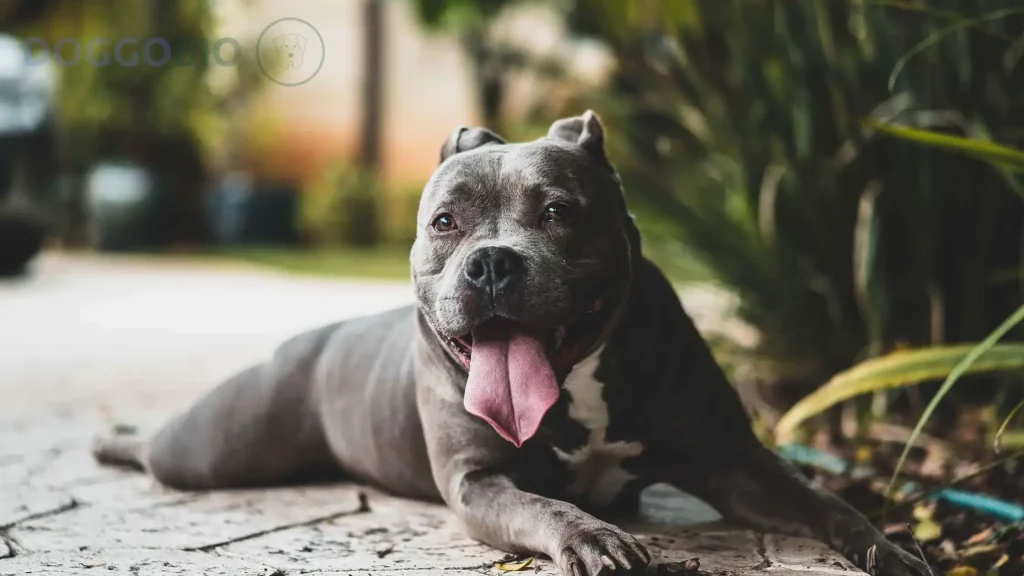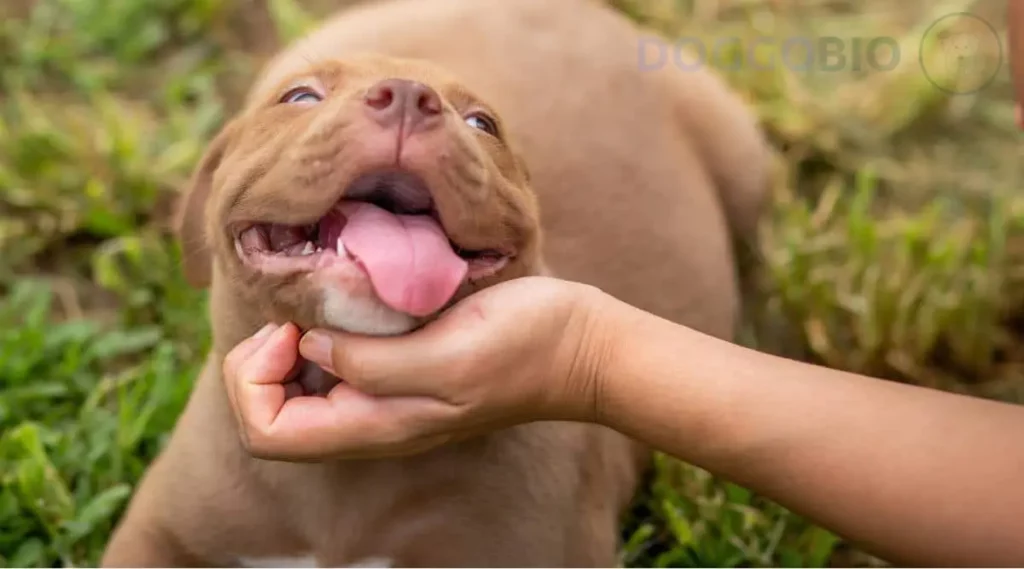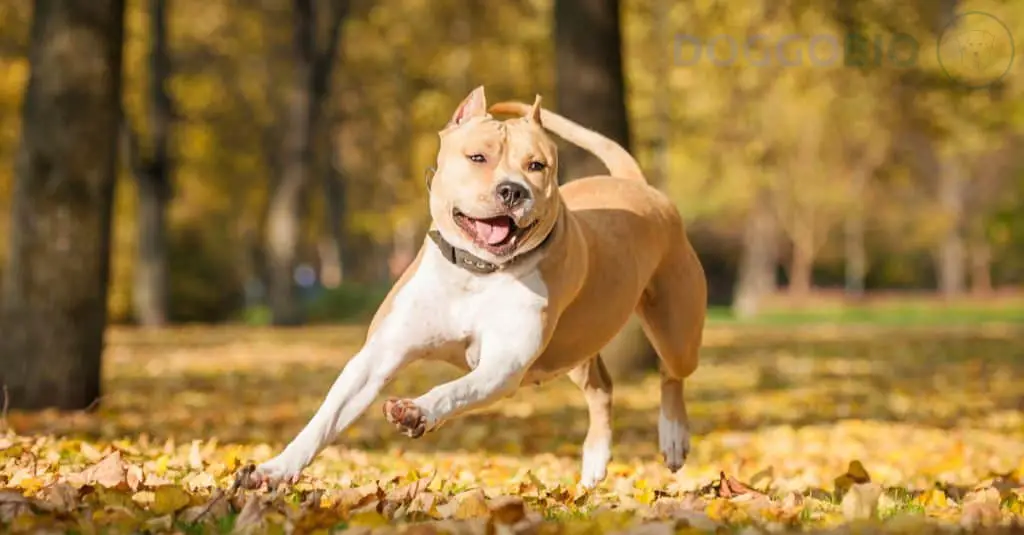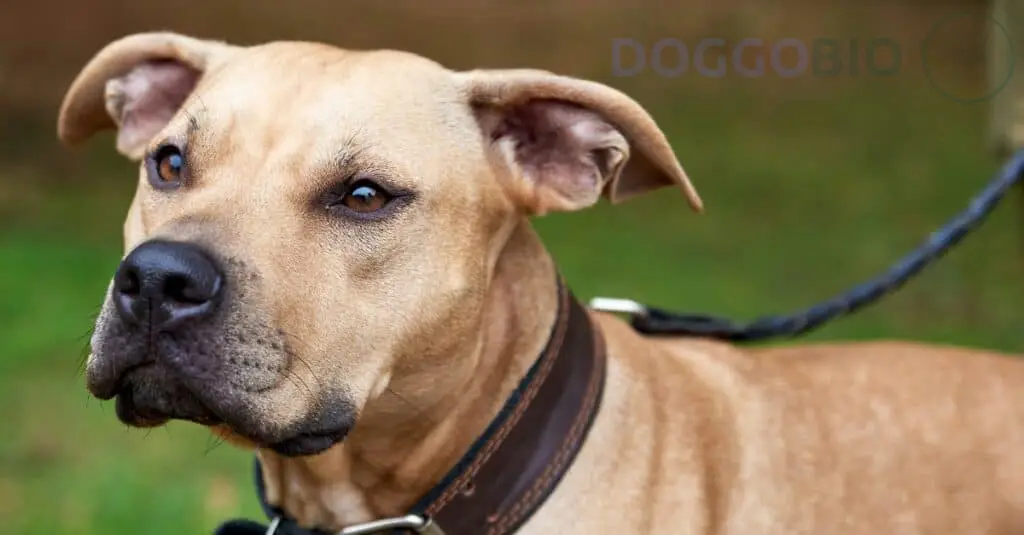The Pitbull breed has gained immense popularity worldwide, prized for its strength, loyalty, and boundless energy. For those considering owning a Pitbull or any dog breed, understanding their lifespan is a common question that arises.
Knowing the average lifespan of a Pitbull is crucial for pet owners to provide optimal care and prepare for the eventual parting.
In this article, we’ll delve into the factors influencing Pitbull life expectancy and offer insights on maintaining their well-being for a longer, vibrant life. Come along on this journey of knowledge and affection for our canine companions.
How Long Do Pitbulls Live?
Well, average lifespan of a Pitbull from 8 to 16 years, but you know what they say, there’s always an exception to the rule.
Breed type plays a significant role in determining a dog’s lifespan, but remembering how well you care for your pup is also essential. If you want your Pitti to stick around for a while, give them proper care and attention.
Pitbull Lifespan by Breed

Based on our research, American Staffordshire Terriers and Staffordshire Bull Terriers lead the pack in the long life marathon. These breeds have an excellent track record of outliving their peers in the pitbull mix.
The American Staffordshire Terrier is a beautiful breed, with short to medium hair that sets it apart from its other pitbull peers. It boasts a lifespan of 12 to 16 years, which is impressive.
On the other hand, we have the Staffordshire Bull Terrier. This short to medium-sized dog has an equally impressive life expectancy of 12 to 14 years.
| Pitbull lifespan | |
| American Staffordshire Terrier | 12 – 16 years |
| American Pit Bull Terrier | 8 – 15 years |
| Staffordshire Bull Terrier | 12 – 14 years |
| American Bully | 8 – 15 years |
What is a Pitbull?
The term “Pitbull” is often misunderstood as a breed when it is a generic term used to describe a category of medium-sized dogs that share similar physical traits such as a short nose, boxy head, muscular body, and short stature. The American Kennel Club and United Kennel Club recognize four Pitbull breeds: American Bully, American Staffordshire Terrier, Staffordshire Bull Terrier, and American Pit Bull Terrier, although it’s common to find mixed breeds with these characteristics.
One of the most striking features of Pitbulls is their range of colors. They can come in brown, spotted, white, black, red (bright brown), blue (silvery gray), or a combination of these colors. This diversity is part of what makes Pitbulls such intriguing and beloved dogs.
Common health issues that can reduce Pitbull Lifespan
Hold onto your leash, folks. It’s time to talk about the top 5 health issues that can impact of pitbull lifespan

1. Hip Dysplasia
Hip dysplasia, the villainous skeletal disorder, could be a standard health issue pit bulls face, probably due to genetics or obesity. The joint between the hind legs and the hip is the familiar spot where this disorder occurs, resulting in an irregularity in the formation of the joint.
Typically, the deformity occurs during the puppy phase, when the joint formation is still in progress. Among pitbull breeds, Staffordshire terrier pit bulls are more prone to developing hip dysplasia.
Here are some of the signs that can help in identifying if your pup has hip dysplasia:
- Walking unevenly
- Sitting abnormally
- Stiffness in movements
- Decreased activity level
- Inability to move (in severe cases)
2. Skin allergies
Skin problems can be a real bother for Pitbulls. Despite their short fur, these puppies may face skin issues for various reasons, such as allergies, infections, and genetic predisposition. They might have a lesser coat, but that doesn’t mean they are immune to environmental triggers.
Ichthyosis, a skin disease, is a common concern for these furry friends. Moreover, if your furry pal is not getting enough zinc in his diet, he may develop a skin infection known as zinc-responsive dermatosis.
It’s essential to look out for these telltale signs of skin problems:
- Excessive paw licking
- Flaky and irritated skin
- Redness followed by hair loss
- Constant rubbing of the body
3. Eyes Problem
Pitbulls can also suffer from cataracts, in which the eye appears cloudy. Although cataracts usually come with old age, it’s not always the case. Sometimes, the protein levels in the lens can cause cataracts in Pitties, resulting in blindness in some severe cases.
Genes and eye injuries can also be responsible for this cloudy eye condition in Pitbulls. Additionally, diabetic Pitbulls are at higher risk of getting cataracts.
Watch out for these signs to detect cataracts:
- Cloudy eyes
- Frequent eye rubbing
- Changes in the size of the pupils
4. Knee injury
A Pitbull’s physical health can be jeopardized due to knee issues, a significant threat they face. These dogs are incredibly active, so it’s no surprise that ligament tears and knee complications arise from their sturdy build and high-level activity.
The cranial cruciate ligament (CCL) is a thin ligament on a dog’s knees that links the tibia and thigh bone, which is at high risk of damage due to Pitbulls’ hyperactivity. CCL is equivalent to ACL in humans. Moreover, Pitbulls are susceptible to luxation, which occurs when the kneecap is displaced.
If you notice any of the following signs, you should take immediate action:
- Mild limping
- Pain
- Hopping and unable to use the hind leg
5. Hypothyroidism
One of the most common problems that these dogs face is hypothyroidism. This condition happens when the thyroid gland doesn’t produce enough hormones, which can cause changes in the dog’s coat, like dullness and hair loss in certain areas.
Interestingly, getting your Pitti spayed can also increase the risk of hypothyroidism, although the reasons behind this are still unclear.
To catch hypothyroidism in Pitbulls, look out for these symptoms:
- Weight gain
- Lethargy
- Hair loss
- Dry skin
- Reduced appetite
- Muscle weakness
6. Heart Disease
Heart disease is no joke when it comes to Pitbulls! Unfortunately, heart disease is a common health problem for these furry friends, and what makes it worse is that it’s usually inherited, so you may not even notice any symptoms until it’s too late. There are several types of heart disease that Pitbulls are susceptible to, including aortic stenosis, irregular heart rhythm, and valve malformations.
But don’t fret just yet! There is something you can do to help your Pitbull avoid falling victim to heart disease. We highly recommend that you stay proactive and take your Pittie in for regular checkups at the vet. Early detection is critical! So be sure to watch for any changes in your dog’s behavior, like difficulty breathing or a loss of appetite, and bring them in for a checkup if you notice anything unusual.
Factors that can influence Pitbull Lifespan

1. Underlying Health Issues
Average lifespan of a pitbull is a complex and multifaceted issue that can be influenced by a wide range of variables, including some factors beyond our control. One crucial aspect of pit bull longevity is their underlying health, which is primarily determined by genetics. For this reason, purchasing a pit bull from a trustworthy breeder who conducts DNA screening on all of their parent dogs is advisable to ensure that their puppies are genetically sound.
If you plan to adopt a pit bull, it is equally important to have your puppy evaluated for underlying health issues as early as possible. This can help identify potential health problems before they become serious, allowing you to take proactive steps to maintain your dog’s health and well-being.
2. Obesity
Keeping your Pitbull at a healthy weight is also crucial. Over 50% of dogs in the US are overweight or obese, and overfeeding your Pitbull is not a sign of love. Dog food bags can recommend inappropriate amounts of food, so it’s best to determine the correct amount by assessing your dog’s body condition. Run your hands over his sides – if you have to press in to feel his ribs, he is overweight. Reduce the amount of food until you can feel the ribs quickly.
An overweight Pitbull is at a greater risk of developing weight-related health issues such as joint pain, diabetes, or high blood pressure. This can exacerbate any pre-existing heart problems. Therefore, slimming down your Pittie is essential.
3. A careless owner
Negligent caretakers are a significant threat to pitbull lifespan. These heartless individuals don’t deserve the love and loyalty of any pet. Denying them food and water, training them for illegal dogfights, confining them in cages, and causing visible injuries are all forms of cruelty that must be reported immediately.
Providing care to your Pitbull and showering them affectionately is necessary and critical for their well-being. Failure to do so can cause severe depression, leading to aggression that can harm the dog and those around it. Don’t be a careless owner, and take responsibility for your furry companion’s health and happiness.
4. Environment
The environment plays a significant role in a pitbull lifespan. Outdoor dogs generally have a shorter lifespan than indoor dogs due to various risks such as accidents, dog fights, and diseases. They are also more vulnerable to extreme weather conditions, which could lead to heatstroke or hypothermia.
To ensure your pit bull’s safety, always keep them on a secure leash when outside, and if they are left unattended, make sure they are in a fully enclosed or fenced area.
Leaving your dog unattended for extended periods, particularly overnight, can also be dangerous. If they develop heatstroke or hypothermia, immediate treatment is essential. Therefore, always check on your dog regularly to ensure their safety and avoid any potential hazards to yourself or others.
5 Best Practices That Can Improve the Pitbull Lifespan

1. Vet Visits
Regular veterinary and wellness checkups are necessary to live their best lives. It’s vital to keep them healthy and extend Pitbull lifespan.
Senior Pitbulls, eight to nine years old, should visit the vet twice yearly. Blood work can be done during one of these visits to detect potential health problems early on and treat them before they become serious.
Early detection of health issues increases the chances of survival and a better prognosis for your furry friend. Preventative medicine and prompt diagnosis can be provided to ensure your Pitbull stays healthy.
Here’s a chart to help you understand the age group of a Pitbull based on its term and actual age.
2. Exercise
Regular exercise is crucial for promoting the longevity of your pit bull. Engaging your furry friend in various physical activities is essential to help them maintain a healthy and active lifestyle.
Whether taking frequent walks, engaging in vigorous workouts like climbing or swimming, or playing a fast game of fetch, there are many ways to keep your pit bull active and moving. However, it’s important to remember not to overwork your dog, as this can lead to exhaustion or injury.
When engaging in physical activities with your pit bull, provide adequate water to keep them hydrated. This can help prevent issues like heat stroke and dehydration, which can be particularly dangerous for dogs during hot weather.
3.Spaying and Neutering
When it comes to increasing the average lifespan of a pitbull, spaying and neutering can play a significant role. By opting for this procedure, you can help reduce the risk of various health issues impacting your dog’s quality of life and overall longevity. These include prostate cancer, pyometra, and intestinal problems, which can all be serious and potentially life-threatening.
If you do not intend to breed your pit bull, it is highly recommended that you have it spayed or neutered when it reaches the appropriate age.
In addition to the health benefits of spaying and neutering, these procedures can positively impact your pit bull’s behavior and well-being.
4. Diet
When it comes to promoting the pitbull life expectancy, diet is a crucial factor that cannot be overlooked. Ensuring your furry friend receives the proper nutrition is vital to maintaining their overall health and well-being.
To provide your pit bull with the best possible diet, carefully consider the type of food you’re giving them. This may involve examining the labels of various dog foods to find the right one for your pet’s needs. Sometimes, homemade dog food or treats are also a good option.
To truly optimize your pit bull’s diet, consulting with a dog nutritionist can be helpful. These professionals can provide valuable guidance on choosing foods and creating a balanced and nutritious meal plan that meets your dog’s dietary requirements.
It’s also important to remember that pit bulls’ nutritional needs may change, particularly as they age. Regularly reassessing your dog’s diet and adjusting it as needed can help ensure they receive the proper nutrients to maintain its health and longevity.
By prioritizing a healthy and balanced diet for your pit bull, you can help ensure that they live a long and happy life by your side.
5. Warm, dry, and safe space
Regarding Pitbulls, a warm, dry, and safe space is essential for their well-being. Their short coat hair makes them vulnerable to cold temperatures, so keeping them cozy is necessary, primarily if you reside in a chilly climate.
Some Posts You Wanna Read More
- Grey Pitbull
- Tri Pitbull
- Blue Nose Pitbull
- White Pitbull
- Are Pitbulls Good With Kids?
- Do Pitbulls Shed A Lot?
- Are Pitbulls Hypoallergenic?
- How Long Are Pitbulls Pregnant For?
- Is Pedigree Good for PitBulls?
Frequently Ask Question
1. How long do Red Nose Pitbulls live?
On average, they can live up to 14 years, which is pretty impressive! However, some of them can live even longer and reach up to 16 years of age.
This breed is based on the American Pitbull Terrier and has a striking appearance with a reddish copper nose and red coat.
2. How long do Blue Nose Pitbulls live?
Well, you might be surprised to know that the average lifespan of a blue nose Pitbull is around 12 years. However, some of these furry friends have been known to live for up to 16 years or more, depending on various factors such as genetics, health, and lifestyle.
The blue nose Pitbull is a variation of the American Pitbull Terrier and is known for its distinctive, silvery gray-blue nose, which makes it stand out from other Pitbull breeds.
3. Are Pitbulls aggressive?
No, Pitbulls are not inherently aggressive. Like any other dog breed, their behavior is influenced by various factors, including genetics, socialization, training, and environment. With proper care, training, and socialization from a young age, Pit Bulls can be loving, loyal, and well-behaved family companions.
4. Do Pitbulls require a lot of exercise?
Yes, they are an active and energetic breed that requires regular exercise to stay physically and mentally stimulated. Daily exercise, such as brisk walks, play sessions, and interactive activities, is important to help them release energy, maintain a healthy weight, and prevent behavioral issues. Providing them with outlets for their energy can contribute to their overall well-being and happiness.
5. Are Pitbulls good with children?
Pitbulls, when properly trained, socialized, and raised in a loving environment, can be excellent companions for children. They are known for their loyalty, affection, and gentle nature. However, as with any dog breed, it’s crucial to supervise interactions between Pit Bulls and children and teach both the child and the dog how to interact respectfully and safely. Responsible ownership and positive training can foster a strong bond between Pit Bulls and children.
Conclusion
In conclusion, how long do pitbulls live? It depends on genetics, lifestyle, and proper care. While the average lifespan of a pitbull is between 12 to 16 years, owners can take steps to prolong their pet’s life and keep them healthy throughout their years.
This includes providing a nutritious diet, regular exercise, and routine vet checkups. As with any pet, the end of a Pitbull’s life can be a difficult and emotional time for owners, but by understanding and preparing for this inevitability, owners can make the most of their time with their beloved companion. Ultimately, a Pitbull lifespan may be relatively short, but the love and joy they bring into their owner’s lives are immeasurable.

Pingback: Tri Color Pitbull: Unveiling the Fascinating World 2023
Pingback: Blue Nose Pitbull: Unveiling The Mystery of Unique Breed 2023
Pingback: Pitbull and Baby: Unveiling the Truth about Pitbull Safety 2023
Pingback: Do Pitbulls Shed? Interesting Facts You Need to Know 2023
Pingback: Grey Pitbulls: The Ultimate Breed Guide You Need to Know 2023